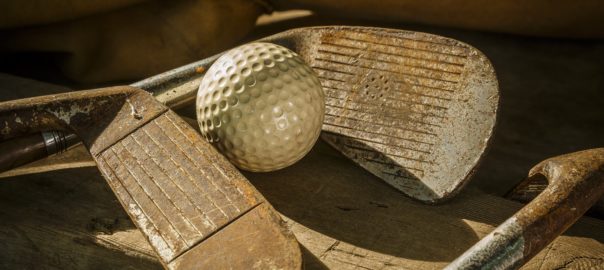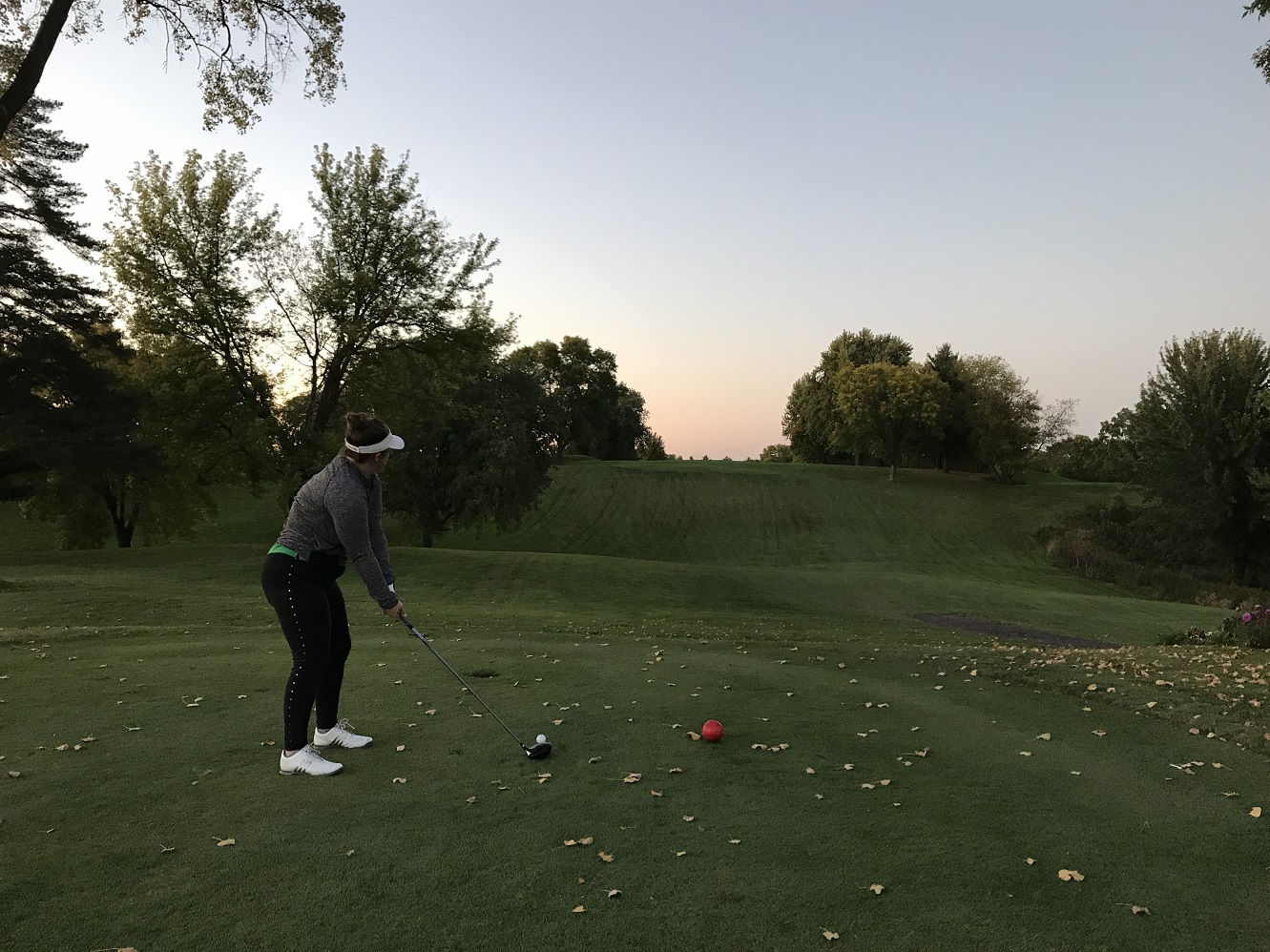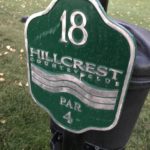The lost golf courses of southwestern Minnesota — and there might be 50 of them, for all I know, the way they keep sprouting up on me like cornstalks in the June sunshine — by and large conform neatly to a template.
I have detailed the template ad nauseam in my book and on this web site, but, hey, let’s take that dead horse and boot it one more time.
Scores of golf courses sprang up across the small and medium-sized Minnesota towns in the 1920s, thanks to a robust economy and access to transportation affording folks enough spare time and spare change to take up the game. (Usually they were townfolk, bankers and doctors and businessmen, while farmers, busy with milking and haying, golfed far less frequently but sometimes offered up their pastures via lease to the newly organized golf clubs.) Then, between effects of the Great Depression and World War II, dozens of courses were abandoned in the 1930s and ’40s.
Among them were many in the “Silos and Flagsticks” lost-course heartland of southwestern Minnesota. I have written about 14 of them and have a handful of new-found ones on my to-do list.
One such lost course is in Slayton, the seat of Murray County, 90 miles west of Mankato and 50 miles from the southwestern corner of Minnesota. Slayton followed the template right up to the end — when it stubbornly attempted to bust out of the lost-course mold.
“New Golf Club Is Formed at Slayton,” read a headline in the Minneapolis Tribune of Feb. 28, 1926.
The story read, in part: “Fifty golf players of Slayton met this week and formed the Tri City Golf club, which will begin functioning with the first break of spring. …
“A nine-hole course will be built on a 130-acre tract on the southern outskirts of the city. The location is ideal, being about half way between this city (Slayton) and Iona, and lying along the state highway between the two cities.
“The land upon which the course is located is rolling and a small stream of water flows through it in normal seasons. Golf enthusiasts of Hadley, Avoca, and other nearby towns will be invited to become members of the club.”
The course wasn’t really on the southern outskirts of Slayton, unless one considers the skirt was one really, really large hoop skirt. The old Slayton golf course was 2.7 miles almost directly south of downtown Slayton, at the southwestern corner of the intersection of what is now county highways 32 and 49.

A reorganization and renaming of the club appears to have occurred in April 1929, when the Tribune reported, “Organization of the Murray Golf club was completed at a recent meeting with the election of officers and completion of arrangements for leasing the course for another year.”
So far, so template-good.
Through the 1930s, proceedings at the golf club appeared to be mostly routine, according to a semi-organized perusal of newspaper clips. (In other words, I didn’t search every word of every year. Which means I probably missed an alien abduction on the fifth fairway in 1933 and a kraken snatching the town pharmacist down by the water at southwest corner of the course in 1937, neither ever to be seen again.) But among happenings at Slayton’s first golf course:
— In 1930, the Murray County Herald reported, some club members were making plans to participate in a tournament in not-far-away Worthington.
— During the first week of June 1935, a headline in the Murray County Herald reported that the course was about to be put in play for the season, with J.R. Price the chairman of the grounds and greens committee. “The dandelions have been somewhat of a nuisance for the ardent golfer for the past few weeks,” the newspaper reported, “but with the present cutting of the fairways, there will be no more trouble looking for balls.”
— A new clubhouse was built in 1938. and the club, the Minneapolis Tribune reported, was “anticipating its largest membership in recent years.”
— In May 1938, N.H. Miller made a hole in one on the eighth hole, and in August 1939, Judge G.J. Kolander aced the 104-yard fourth hole with a 5-iron.
Then came the 1940s, by which time many other 1920s-born golf courses in Minnesota and especially southwestern Minnesota had either closed up shop or were about to. Slayton, however, defied the template and pressed on.
A look through the Murray County Herald of 1940 revealed no local golf coverage, at least that I noticed. But on May 1, 1941, the newspaper reported, Harold Hanson had been elected president of Slayton Golf and Country Club. Membership would cost $10, $5 for women and students. “The question of hiring a care-taker was left to the executive board,” the newspaper reported. A membership of 75 was anticipated for the 1941 season.
By 1942, the United States had entered World War II, the bulk of the coverage in the Murray County Herald had turned toward the war, and, most likely, golf had ceased on the south-of-Slayton grounds. A 1943 story mentioned that Ralph Larson of Slayton had won a tournament at Worthington, but there was no mention of the Slayton course in the story or in any other newspapers I scanned. The newspaper reprinted an editorial from the Austin (Minn.) Daily Herald in which golf was excoriated, the editorialist stridently frowning upon people would play such a game when they could be contributing more by working in the fields.
So, the lost-course template apparently had been fulfilled. The Murray / Slayton layout had been abandoned.
Or not.
I assumed at this point that the golf course had disappeared forever (template paradigm at play). I read nothing about local golf in skimming 1945 newspapers. But I decided to look further. Part of this had to do with a suspicion that, as one of the larger small towns in the area, if that makes any sense, perhaps Slayton still would have had the wherewithal to support a golf course. The city’s population had been growing steadily: 1,045 in 1920, 1,102 in 1930, 1,587 in 1940.
And there, in the pages of the 1946 Murray County Herald, Slayton’s golf course re-emerged.
“Golf Course Open; Greatly Improved” read a headline in the June 6, 1946, Herald.
“After being closed down during the war, the Slayton golf course is again open and in use,” the story read. “Though membership is low, there being only 25 signed up, the number is growing daily, according to President Walter Schrupp, and will reach 80 or 90 once the course is restored to its former good shape.” Also noted were a freshly painted and renovated clubhouse, improved fairways, and an effort to resolve an issue with grub worms.
The golf course presumably made it through 1946, because a story in the Herald of June 19, 1947, was headlined “Golf Club Progresses.”
The newspaper reported that bad weather had delayed the course’s opening for the season but that it was imminent. “The course has been covered with weeds and grass on the greens but the Herald has been informed that a great deal of work already has been done and it will be mowed again at the end of this week.
“Biggest problem facing the mainsprings of the club so far has been lack of funds and manpower. Most of the work that has been done so far has been done by local golf enthusiasts in their spare time.”
So the golf course had been revived, but still, reading between the lines, it appeared to be on life support. And a stroll through 1948 editions of the Murray County Herald revealed no mention of a local golf course.
My best guess is that the Slayton golf course — the one on the lot south of the city — did not survive past 1947. I don’t know that for a fact. Determining dates of lost courses’ demise might be more challenging than uncovering the courses in the first place, because, not surprisingly, the clubs rarely publicized it when their courses shut down, and it is increasingly difficult to find current town residents who remember 1930s and ’40s-era lost courses.
Regardless, the original Slayton golf club made a valiant effort at surviving past the template time frame of early-era Minnesota lost golf courses — that is, established in the 1920s but gone before the end of World War II. And that was not the end of golf in Slayton. In 1957, Slayton Country Club was established one mile north of the city, with a new nine-hole layout. The course is still in operation, with private membership and operated by GreatLife Golf & Fitness.
Notes: Photo at the top of this post is by Peter Wong. As always, I come away with more questions than answers about this lost golf course and welcome any responses or revelations. Thanks for reading.
Notes, Part 2: On Oct. 27, Heather Engelkes contacted me to say she and her husband, John, own the homestead across the land that was the Slayton golf course and that “we now run cattle on the pasture that was once the golf course.” After I chastised her for the likelihood of bovine hoof marks now pockmarking the greens and tee boxes (I was kidding), she further noted that 80 acres of the former golf course is now tilled farmland. Her husband, she said, suspected that there were indeed nine holes on the golf course site.














